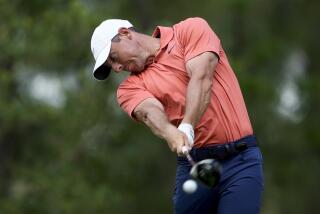Don’t Expect Apologies
Next week is Masters week, which is always something special, or so Phil Mickelson would have us believe after what happened to him last year on the finely manicured carpet that is Augusta National.
As always, the emphasis at the Masters is on the greens, and they’re about the most famous plots of short-grass real estate you can find. Or maybe “famous” isn’t the right word. They’ve also been described as immaculate, undulating and sloped. The word “unfair” is never used.
No, Augusta National is not the kind of place where they like you to toss around negative words, carelessly or on purpose.
So for the time being, the azaleas are blooming, Rae’s Creek is flowing and breezes are rushing through the pines.
But soon enough there’s going to be another major, and, unlike Augusta National, it’s going to be played in a place where Mickelson didn’t win the last time.
Prepare yourself to say hello to Pinehurst.
It’s still two months away, but the United States Golf Assn. is getting it ready for Mickelson, who was second to Payne Stewart in the 1999 U.S. Open at Pinehurst, and everyone else who shows up.
After the rigors of Shinnecock last year, and how tough the place played and the way that seventh green caused blood pressures to shoot through the roof, the common thinking is that the USGA is guaranteed to make up for it and transform Pinehurst from a snarling beast into a purring pussycat, right?
Not exactly. In fact, get ready for Pine-hurts, you players.
“A kinder, gentler U.S. Open?” said David Fay, the USGA’s executive director. “Huh?”
There’s more.
“The Open has long had the reputation of being the world’s toughest golf tournament. I would hate to see the U.S. Open lose that imprimatur. We want to make it as hard as possible, but won’t go over the edge as goofy golf.”
So remember this: There will be no makeup at Pinehurst for what happened at Shinnecock, which, Fay said, was simply the result of hot, windy weather that made some of the greens -- such as the tricky seventh and the glass-like 17th -- either hard to stick a golf ball on or to putt on.
According to Fay, the problem with the seventh at Shinnecock had to do with the slope of the green, but it was also mowed differently. It was fast, very fast, Fay said, and the USGA also didn’t have any rough on the left side of the green that might have prevented balls from rolling off.
In hindsight, the only thing the USGA did wrong was not watering the green before the weekend rounds began, he said.
The bottom line is that there wiIl be no Shinnecock after-effect at Pinehurst. There’s no way in North Carolina that Pinehurst will resemble a payback, or an invitation to par, or just a big, green welcome mat. In fact, Fay said there was nothing even to say sorry about.
“No apologies necessary. I don’t want to sound smug about it, because we did feel badly about Shinnecock,” he said.
“I have told our people, mixing sports metaphors, that we took one high and inside, a little chin music, so don’t dust yourself off and dig in like Willie Mays.”
Pinehurst, a Donald Ross design, is famous for its greens, which are humpbacked, or located on hillocks, and depending how fast the greens are there are probably going to be some golf balls rolling off the green because of their shape.
Fay promises the same pin locations as the 1999 U.S. Open and basically the same course, although the USGA has lengthened it by about 92 yards, to 7,217. Four holes are slightly longer: the par-four second is 22 yards longer, to 471; the par-five fourth is 15 yards longer, to 565; the par-four 11th is 23 yards longer, to 477; and the par-four 14th is 32 yards longer, to 471.
Besides narrowing the fairways by an average of about four yards, the USGA hasn’t altered Pinehurst’s look that much since Stewart won on the last hole and beat Mickelson six years ago.
The greens, Fay said, are Pinehurst’s last line of defense.
And the greens at Shinnecock are last year’s news, he said, because many tend to remember only the bad stuff.
“I’m not one to say what could have been, but if Phil had not double-bogeyed 17, the story line would have been different. ... ‘Phil and [Retief] Goosen solved the riddle.’ That’s a classic U.S. Open type of finish, when a handful of players figure out how to play the course.”
A handful of players? Pinehurst may not turn out to be the puzzle that Shinnecock was, but if it does, it won’t be because the USGA didn’t try. Just don’t expect a walk in the park. Remember, in USGA-speak, golf means never having to say you’re sorry.
More to Read
Go beyond the scoreboard
Get the latest on L.A.'s teams in the daily Sports Report newsletter.
You may occasionally receive promotional content from the Los Angeles Times.










